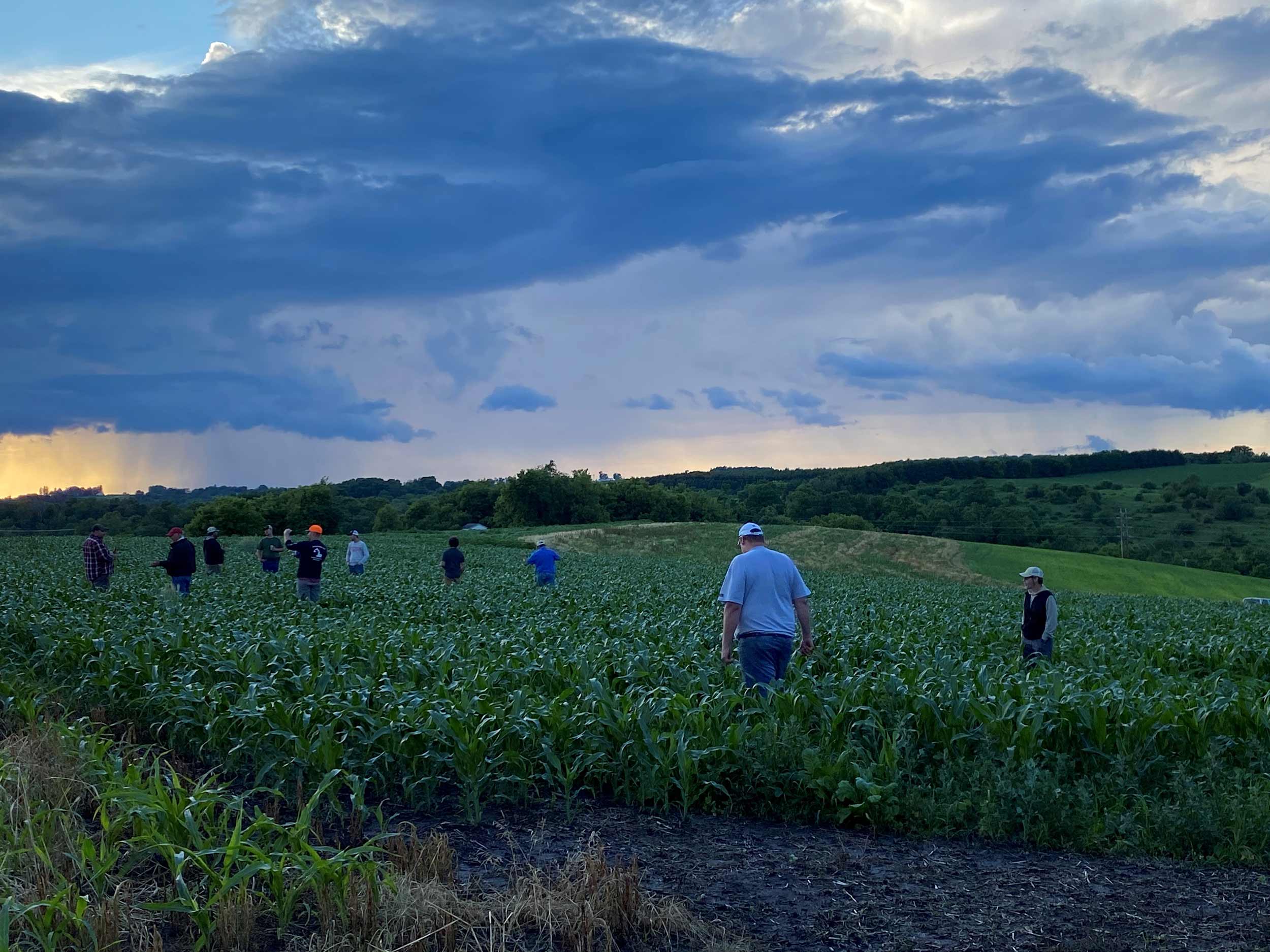Funded Project
2023| Boone River Watershed

Contact
Applicant Organization: The Nature Conservancy
Contact: Karen Wilke
Email: kwilke@tnc.org
Project
Tiny Topeka Shiners are an endangered minnow species native to the Midwest. As the name suggests, Topeka Shiners shimmer in small to medium sized streams with gravel or sandy substrates. The presence of this small silvery species is an indicator of healthy river ecosystems, since they are sensitive to environmental changes. The little fish is also an important food source for larger fish and birds, so protecting them is vital.
Oxbows, u-shaped river meanders, are biodiversity hotspots, with shallow depths and pebbly shores preferred by Topeka Shiners. Oxbows also play a key role in water filtration and floodwater storage. When one of these winding curves becomes isolated due to erosion or flooding, oxbows can dry out, removing natural habitat and diminishing water quality. Oxbows are natural water filters, which is important on farmlands where nitrates often streams through farm tile.
A large 3.5-acre oxbow along the Boone River tributary in Wright County, Iowa, was at risk of shallowing and drying out, impacting both the local ecosystem and water quality. Three farm tiles drained into this vital oxbow, feeding into the Boone River. In response, the Boone River Watershed Partnership, in collaboration with The Nature Conservancy, the Iowa Department of Agriculture and Land Stewardship, and the Fishers & Farmers Partnership, launched a comprehensive restoration project. Given its size, the oxbow features eight distinct pools designed for water storage and fish habitat. Restoration efforts will include stabilizing streambanks, seeding the area with a mesic prairie mix, and returning the nutrient-rich excavated soil to the fields, creating a thriving aquatic environment while enhancing agricultural productivity.
The restoration will also enhance water quality. Past projects indicate that up to 42% of nitrates could be filtered from the three tiles feeding into the site. Karen Wilke, the coordinator of the oxbow project, emphasizes that each initiative on Boone Creek is designed to provide “multiple, maximum benefits.” By varying water depths and creating diverse habitats with native seedings, the restoration promotes increased biodiversity in the oxbow.
An oxbow of this size provides habitat for 57 fish species and is home to over 80 types of birds, as well as mussels, macroinvertebrates, and insects. Maintaining fresh, clear water is crucial for supporting healthy wildlife populations, particularly benefiting the Topeka Shiners.
In collaboration with Fishers & Farmers Partnership and other resources, The Nature Conservancy has completed 37 oxbow restorations over the past 11 years, with an additional 13 scheduled in 2024, demonstrating a commitment to long-term conservation and restoration efforts in the region. Karen Wilke anticipates that there will be over 400 restoration sites identified, ultimately benefiting both aquatic life and human communities downstream. Initiatives like these serve as excellent examples of how collaborative partnerships, community engagement, and thoughtful restoration practices can contribute to the protection of endangered species, enhancement of ecosystems, and improvement of water quality.

